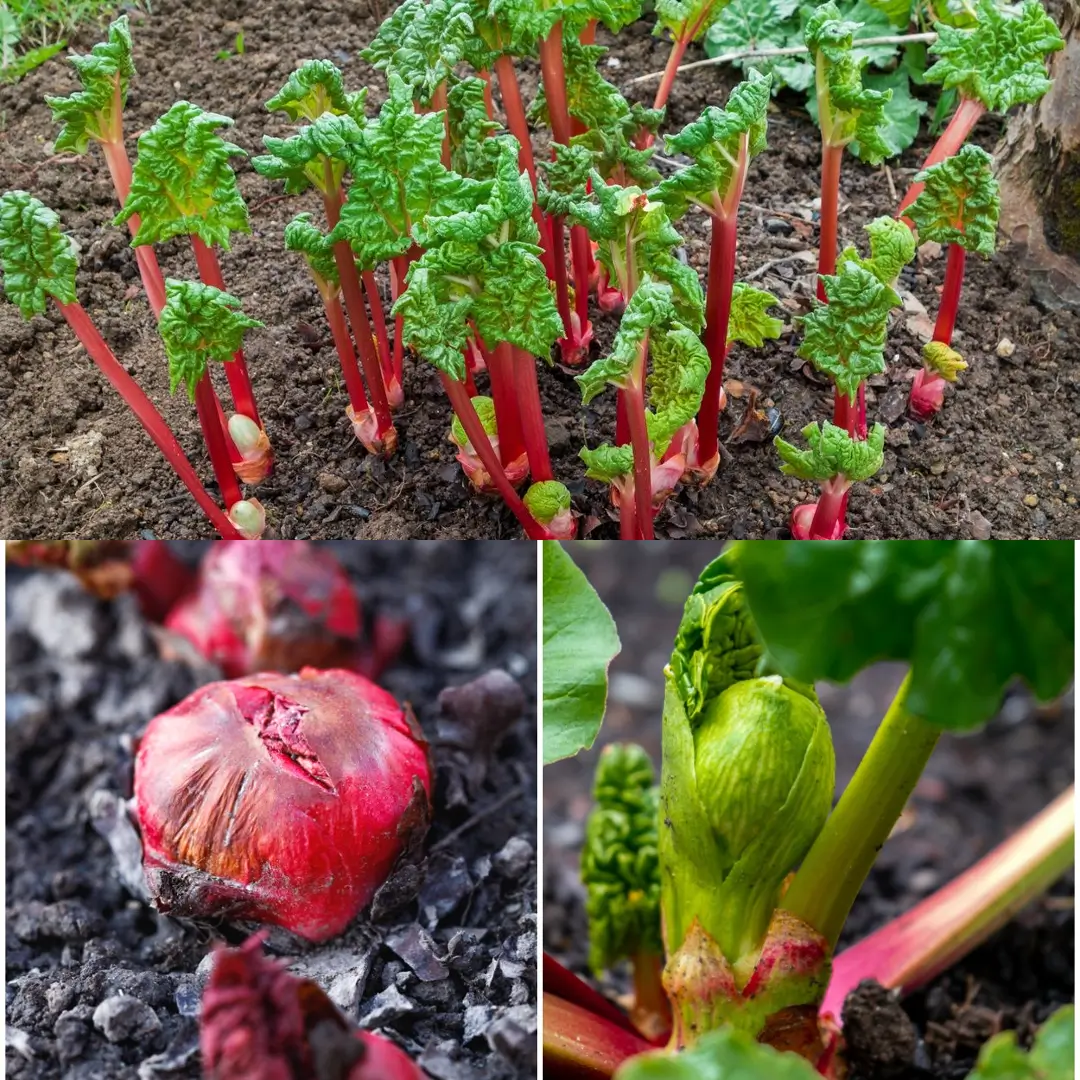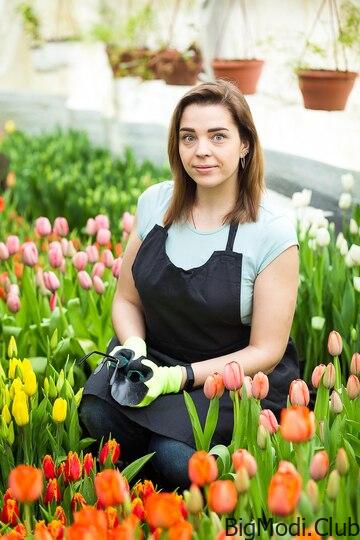Grow rhubarb can be an incredibly rewarding experience. With its vibrant stalks and unique flavor, it adds both beauty and taste to your garden. If you’re wondering how to grow rhubarb, you’re in the right place! This guide will walk you through everything you need to know, from selecting the perfect spot to harvesting those delicious stalks.
5 Steps to Rhubarb Success
Choose a Spot
First things first, location is key! When figuring out how to grow rhubarb, make sure to select a location that gets full sun. Rhubarb loves the warmth and light, which helps it thrive. A sunny spot not only encourages growth but also enhances the color of the stalks, making your garden look even more vibrant. If you’re in a cooler climate, ensure your rhubarb plants get at least 6 to 8 hours of sunlight daily.
Prepare the Soil
Now, let’s talk soil! Rhubarb is a heavy feeder and prefers fertile, well-drained soil. To achieve this, enrich your soil with organic matter, such as compost and sheep pellets. This not only boosts nutrients but also improves soil structure, helping with drainage. Adding a layer of vegetable mix will create the perfect environment for planting. If you’re in New Zealand, keep in mind that the best time to plant rhubarb is from autumn to the end of spring.
Fertilize
Fertilization is another critical aspect of how to grow rhubarb successfully. Use a general fertilizer during key growth periods in spring and autumn. This will support the plant during its active growing phases and help establish strong roots. A little love from a balanced fertilizer goes a long way in encouraging lush, healthy growth.
Water
Don’t forget about watering! Keeping your plants well-watered, especially during dry spells, is essential. Rhubarb needs consistent moisture to develop juicy, tender stalks. However, be careful not to overwater; rhubarb dislikes “wet feet,” which can lead to root rot. Always check the soil moisture before watering.
Follow Guidelines
Finally, refer to a detailed guide or local gardening resources for optimal growing practices. Every garden is different, and understanding your specific climate and soil conditions can greatly influence your success.
Planting Rhubarb
Soil Requirements
When considering how to grow rhubarb, it’s vital to know that this plant thrives in fertile, well-drained soil. Rhubarb hates waterlogged conditions, so ensure your soil drains well. If your soil is sandy, mix in plenty of organic matter to enhance its fertility and moisture retention.
Soil Preparation
To prepare the soil for rhubarb planting, incorporate Tui Super Sheep Pellets and Tui Compost before planting. This mixture creates a nutrient-rich environment that encourages robust growth. After mixing these into the soil, add a layer of Tui Vegetable Mix for planting.
Container Growing
If space is limited, don’t fret! Rhubarb can also be grown in large pots and containers. Just fill them with Tui Vegetable Mix for a nutrient-rich growing medium. Container gardening allows you to control the soil quality and move your plants if needed.
Directions for Planting in Garden Beds
- Soak Seedlings: To give your seedlings a strong start, soak them in Tui Organic Seaweed Plant Tonic. This step helps prevent transplant shock, allowing them to adapt more quickly to their new environment.
- Prepare Planting Hole: Dig a hole that is approximately twice the depth and width of the root ball of your plant. This ensures that the roots have ample space to grow.
- Plant Positioning: Gently loosen the root ball and position the plant in the center of the hole. It’s essential to plant it at the same depth it was growing in its pot. Then, fill in with Tui Vegetable Mix.
- Watering: Once planted, water the plant well. Continue to water regularly, especially during dry spells, to keep your rhubarb healthy and hydrated.
Propagation Methods
When it comes to propagating rhubarb, there are two primary methods: from seed and by dividing existing clumps.
From Seed
If you prefer to grow rhubarb from seed, sow seeds in trays filled with Tui Seed Raising Mix in spring. Once the seedlings develop a few sets of leaves, transfer them to pots. When they reach about 10 cm tall, plant them out in the garden, spacing them at least 1 meter apart.
Dividing Clumps
Another popular method is dividing existing clumps. This is best done in spring, autumn, or winter. To do this, slice through the crown of an existing plant with a sharp spade or long knife, creating new sections. Plant these sections in the ground or in pots, ensuring the pots are larger than the off-cut. As the plant establishes roots, new leaves will begin to sprout.
Care and Maintenance
Watering
Ongoing care is crucial for your rhubarb’s success. Keep the plants well-watered, especially during dry periods. Rhubarb can bounce back from drought, but consistent moisture promotes healthier growth and yields.
Fertilizing
During the spring and autumn growth periods, feed your plants with Tui General Fertiliser or Tui Blood & Bone. This will help stimulate growth and maintain a robust plant structure.
Pest Management
Effective care will also help keep insect pests at bay. Regularly check your plants for signs of pests and take action if you notice any issues. A healthy plant is less susceptible to pest problems, so maintaining good growing conditions is key.
Harvesting Rhubarb
When to Harvest
Knowing when to harvest is part of how to grow rhubarb successfully. Pick rhubarb stalks when they are thick enough. Avoid leaving them on the plant for too long, as larger stalks can taste bitter and become woody. The ideal time to harvest is typically late spring to early summer.
Harvesting Technique
When harvesting, grasp a stalk close to the ground and twist it gently to pull it away from the plant. If it doesn’t come off easily, use a knife to cut it as close to the base as possible. Be careful not to break off new shoots while picking!
Storage
After harvesting, you can store rhubarb in the fridge for up to a week. For longer storage, cut the stalks into 5-10 cm lengths and freeze them. They can last for up to three months in the freezer, ready for your favorite rhubarb recipes.
Additional Tips
- Weed Control: Keep the area around your rhubarb plants weed-free. Weeds compete for nutrients and water, which can hinder your plant’s growth.
- Pest Prevention: Watch out for slugs and snails, which can quickly damage the lush leaves of your rhubarb. Consider laying down Tui Quash slug & snail control to protect your plants.
- Annual Maintenance: With proper care, rhubarb plants can last for years. Add compost to the soil each year and maintain regular watering during dry periods. In autumn, when the top growth dies back, remove dead leaves to expose the base of the plant to the cool weather, stimulating new shoots for the next season.
Growing rhubarb can be a delightful and fulfilling endeavor. By following these steps on how to grow rhubarb, from choosing the right spot to knowing when to harvest, you’ll be well on your way to enjoying a bountiful crop. With its striking appearance and versatility in the kitchen, rhubarb is a fantastic addition to any garden. So grab your gardening gloves and get started on this exciting journey! Happy gardening!
FAQs
What is the secret to growing rhubarb?
The secret to growing rhubarb lies in providing optimal conditions for the plant. To successfully grow rhubarb, start by choosing a sunny location with well-drained, fertile soil rich in organic matter. Regular watering, especially during dry spells, is crucial for healthy growth. Additionally, fertilizing your rhubarb during the spring and autumn with a balanced fertilizer will help support strong stalk development. Lastly, ensuring good weed management and pest control will allow your rhubarb to thrive without competition for nutrients.
How long does it take for rhubarb to grow?
Rhubarb typically takes about 2 to 3 years to fully grow rhubarb from crowns or divisions before you can start harvesting significant amounts. If you’re starting from seed, it may take longer, as you’ll need to grow rhubarb seedlings for several months before transplanting them. However, once established, rhubarb can produce a bountiful harvest each year, especially if cared for properly.
Is rhubarb hard to grow?
Rhubarb is generally not hard to grow rhubarb, making it a great choice for beginner gardeners. It thrives in a variety of climates and is relatively low maintenance once established. The key is to ensure it has the right conditions—full sun, well-drained soil, and regular watering. With proper care, you can grow rhubarb as a robust and productive plant in your garden.
How to grow thick rhubarb stalks?
To grow thick rhubarb stalks, focus on the following practices:
- Soil Enrichment: Use rich, organic matter in your soil, such as compost and well-rotted manure, to provide essential nutrients.
- Watering: Keep the soil consistently moist but not waterlogged. Adequate moisture is crucial for plump, juicy stalks.
- Fertilization: Apply a balanced fertilizer in spring and autumn to promote healthy growth.
- Spacing: Ensure your rhubarb plants are spaced adequately (at least 1 meter apart) to allow for proper airflow and room to grow.
- Harvesting: Avoid over-harvesting in the early years. Let the plant establish itself before taking too many stalks to allow for thicker growth in subsequent years.


